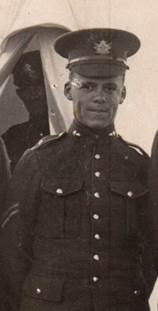
Figure 1. 928622 Acting Corporal William Albert Smith, C.E.
(Image from the author’s collection)
928622
Sapper (Acting Corporal)
WILLIAM ALBERT SMITH
Canadian
Engineers
By
Lieutenant Colonel Edward De Santis, MSCE, P.E.,
MinstRE
(January 2023)

Figure 1. 928622 Acting Corporal William Albert Smith,
C.E.
(Image from the author’s collection)
NOTE: The image in Figure 1 is a cropped enlargement of Smith taken from a group postcard photograph of him that is in the author’s collection.
1. INTRODUCTION
I was for fortunate to be able to find Smith’s Great War service papers on the National Archives of Canada web site and a number of detailed family trees on Ancestry.com. Unfortunately his service papers were difficult to read and understand. The papers were replete with abbreviations and many of the abbreviations were not official; that is, they appear to be shorthand notations written by the clerk who entered them on various forms. Given these difficulties, I have tried to make this story of his life and military service as accurate as possible despite the problems encountered in his service record. There are a number of Smith family trees on Ancestry.com which have been prepared by different people. In some cases the information presented on the various trees is not in agreement. I have used the information that I thought to be accurate from the family trees cited in the Reference section of this narrative.
2. FAMILY INFORMATION AND EARLY LIFE
Family Information
William Albert Smith was born in County Cavan, Ireland[1] on 3 September 1899. He was the son of William Albert Edward Smith and Mary (Molly) Lowery Smith, née Hallsall and he appears to have been the only child of William and Mary.[2]
According to a family tree produced by G.W. London, the location of Smith’s birth shown on his Record of Marriage indicates that he was born in Toronto, Ontario. It appears, however, that he always told his family that he was born in Cavan County, Ireland. Cavan County also is what appeared on his death notice and on his military service papers. Young William also told a story about spending too much time with the servants in his father’s household, so he was sent to an uncle in Canada. According to genealogical researchers of the Smith family it has been a challenge to trace any of William Albert Smith’s birth records. According to family oral history he claimed to have been born in Ireland, the son of a Squire, and being the youngest son in a Roman Catholic family he was destined to become a priest which was not to his liking.[3]
Figure 2. Mary Lowery Smith. |
Figure 3. William Albert Edward Smith.(Image courtesy of G.W. London) |
NOTE: The images above are from the William Albert family tree by G.W. Long. There is some doubt regarding the validity of these photographs as truly being the parents of William Albert Smith.
Early Life
If William Albert Smith’s story about being sent to Canada to live with an uncle is true, then he must have been sent at a very early age. Since he was born in 1899 and was only 17 years old when he tried to join the Canadian Army in 1916, then he might have been an adolescent or a young teenager when he arrived in Canada. On his Attestation Paper he claims to have been a farmer prior to his enlistment. If he was, then he was probably a farmhand on his uncle’s farm.
Oral history recalled by family members indicates that in his youth William may have worked in the stables for a Colonel Spencer, possibly William Melville Spencer of Imperial Oil. A man by the name of William Melville Spencer had a farm on Windermere Road in London, Ontario.[4]
3. PHYSICAL DESCRIPTION
The following is a physical description of William Albert Smith in February 1916 when he underwent a physical examination at Palmerston, Ontario upon his enlistment in the Canadian Army.
Age: |
17 (underage) |
Height: |
5 feet 4 inches |
Weight: |
130 pounds |
Girth fully expanded: |
33½ inches |
Range of expansion: |
3 inches |
Physical development: |
good |
Complexion: |
dark |
Eyes: |
brown |
Hair: |
brown |
Small-Pox marks: |
none |
Vaccination marks: |
1 on left arm |
Religion: |
Church of England |
NOTE: His religion, as indicated on his military service papers, is Church of England. This is at odds with the family’s oral history which indicates that he was Roman Catholic.
3. RECRUITMENT AND ENLISTMENT
Recruitment
How William Albert Smith was recruited to join the Army or what prompted him to do so in early 1916 is not known. At the time it appears that he was living in the rural community of Rothsay, Wellington County in southwestern Ontario[5] and probably was working on a farm. He claims to have had an uncle living in Canada, so perhaps he was living and working on his uncle’s farm.
The 153rd (Wellington) Battalion, C.E.F. was based in Guelph, Ontario. The battalion began recruiting in late 1915 in Wellington County, the county in which Smith was living. Guelph was located about 90 miles southeast of Rothsay, so Smith’s home town was an easy target for the battalion’s recruiting officers and sergeants.
Enlistment
Smith attested on 21 February 1916 for service in the Canadian Over-Seas Expeditionary Force (C.E.F.) at Palmerston, Ontario, a town located about 22 miles west of Rothsay. As part of the enlistment process he was required to answer a number of questions that were normally put to a new recruit. The following were his responses as taken from his Attestation Paper.
Address: |
Rothsay, Ontario |
Place of Birth: |
County Cavan, Ireland |
Next-of-Kin: |
Mrs. Molly Hallsall |
Address of next-of-kin: |
2 Orwell Road, Rathgar, Ireland[6] |
Relationship to next-of-kin: |
Mother |
Trade: |
Farmer |
Married: |
No |
Willing to be vaccinated: |
Yes |
Presently serving in the Active Militia: |
No |
Prior naval or military service: |
No |
Willing to serve in the C.E.F. overseas: |
Yes |
On the same day
as his attestation his oath was certified by a Justice of the Peace
and he was found to be medically fit to serve in the Canadian
Over-Seas Expeditionary Force. He was then taken on the
strength of the 153rd Battalion, C.E.F. in Military
District 1 as a Private and his attestation was certified by the
Officer Commanding the 153rd Battalion, C.E.F.[7]
4. POSTINGS AND ASSIGNMENTS
153rd Battalion, C.E.F. (1916-1917)
Although Smith was initially posted to the 153rd, he did not remain with the battalion when it was deployed to England. He served with the battalion for about a year and appeared to have impressed the officers and non-commissioned officers of the unit. On 7 March 1916 Private Smith was promoted to Provisional Lance Corporal and on 8 April 1916 he was again promoted to Provisional Corporal.
No. 1 Special Service Company (1917)
In March of 1917, the authorities suddenly realized that Smith was underage. As the 153rd was preparing to deploy overseas in April, something had to be done with Smith. As he was declared “unfit for the infantry until 18 years of age” he was posted to No. 1 Special Service Company. Special Service Companies appeared to be units tasked with administrative and clerical duties.
1st Depot Battalion, Western Ontario Regiment (1917-1918)
This posting is one of the uncertain ones as explained in Section 1 of this narrative. The portion of Smith’s service papers (Casualty Form – Active Service) where this posting is shown is almost illegible due to poor handwriting and fading of the pen or pencil entry. In any case it appears that he served in this Depot Battalion from 15 October 1917 until 21 June 1918.
Effective 20 March 1917 a new territorial regimental system for reinforcing the Canadian Corps in France was instituted throughout the Canadian Armed Forces both in Canada and Overseas. Twenty six Reserve Battalions were created in England (this number being reduced to fifteen by 1918.) In Canada regional depots, called Garrison Regiments were formed to supply the reserve battalions in England with reinforcements. Depot Battalions were initially authorized under G.O. 89 of September 1917 “For the purposes of training and administration.” Smith’s unit, the Western Ontario Regiment, was authorized under G.O. 57 of 15 April 1918 with headquarters located in London Ontario, with a single Depot Battalion and the following units under its command; the 1st Battalion, Canadian Garrison Regiment, a Special Service Company, a Cyclist Platoon, and a Detachment of Canadian Military Police. While he was serving in the battalion he was a Corporal in the Garrison Military Police.[8]
Canadian Engineers, St. Johns, Quebec (1918)
Corporal Smith was posted to the Engineer Training Depot at St. Johns, Quebec on 22 June 1918. On 24 June he was promoted to Corporal[9] and presumably he underwent training at the depot. The postcard photograph shown below shows him with two of his mates at the depot. In the photograph he is still wearing his corporal stripes, although in truth his substantive rank was Sapper.
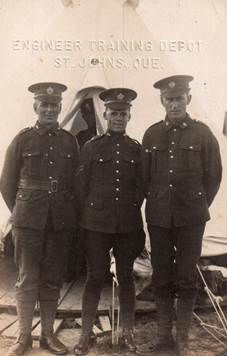
Figure 4. Corporal W.A. Smith at St. Johns with Wilson and
R.L. Smith.
(Original postcard photograph in the author’s
collection)
The names of the three men in the photograph are written on the back of the postcard. They are, from left to right, 2010639 [Sapper] Allen Wilson, 928622 Corporal W.A. Smith and [Sapper] R.L. Smith. The postcard is believed to have been Corporal Smith’s. The ranks in brackets [ ] have been added by the author as they are not written on the postcard.
England and Wales (1918-1919)
Wilson embarked at Halifax, Nova Scotia in the 74th Draft of Canadian troops bound for the war in Europe. Sapper Allen Wilson was to proceed to England with Smith, but he went absent without leave in Halifax and was listed as a deserter when his ship sailed.[10]
The men of the 74th Draft sailed from Halifax on 3 August 1918 aboard the R.M.S. Pannonia and disembarked in England on 18 August.
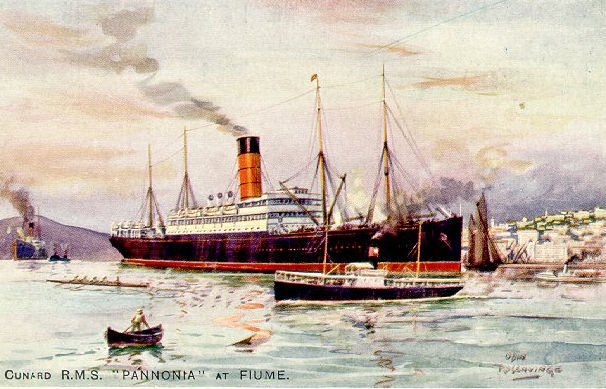
Figure 5. R.M.S. Pannonia, c.
1918.
(Image courtesy of Wikipedia)
Seaford, Sussex and Rhyl, Wales (1918-1919)
At this point Corporal Smith’s postings and movements in England become rather muddled due to the poor handwritten entries in his service papers. On 9 September 1918 he was posted to the 2nd Canadian Engineer Reinforcement Battalion, thought to be at Seaford, Sussex. He was then transferred to the 1st Canadian Engineer Reinforcement Battalion at Seaford on 29 October and on 16 December his records show that he moved from Seaford to Rhyl, a town in North Wales.[11] It may be assumed that he was involved in some training exercise there, but this is not certain. While he was there he was appointed an Acting Lance Corporal on 24 January 1919, so it must be assumed that at some time between 24 June 1918 and 24 January 1919 he had reverted to his substantive rank of Sapper. On 29 April 1919 he again reverted to the rank of Sapper from his appointment of Acting Lance Corporal.
Kinmel Park, Wales (1919)
According to his service papers, Sapper Smith was admitted to the 9th Canadian General Hospital at Kinmel Park in Wales. The hospital was located in the Kinmel Park Training Area. The Kinmel Park Training Area was an army training ground in what was once the grounds of Kinmel Hall, near Abergele, in Conwy county borough. The camp was built in 1915 to train troops during the Great War and was later used to house troops at the end of the conflict. A riot broke out in the camp among Canadian forces in 1919, leading to the deaths of several soldiers. It appears that Smith may have been there during the time of this riot.
At the end of the war, thousands of Canadian troops remained in Europe. The military had initially planned to send the forces home at the earliest opportunity. However, considerable numbers of the troops had relatives and friends that lived in Britain and their deployment provided the opportunity to visit, a chance they would otherwise be unlikely to have. The army gave in to these demands and stationed troops at Kinmel Camp during their stay. Based on his Attestation Paper, Smith’s mother was living in Ireland. He may have been given the opportunity to visit her while he was at Kinmel Park.
The conditions at Kinmel Camp were described as "basic" and the soldiers began to grow dissatisfied with their living conditions after several months. Their chances to be repatriated home were also delayed on more than one occasion when troop carriers, initially designated to them, were used to transport other units home. An outbreak of influenza also claimed the lives of 80 soldiers at the barracks. In early 1919, small instances of looting broke out in the camp before, on 4–5 March 1919, the Kinmel Park mutiny broke out, in which 20,000 war weary soldiers expressed their anger at their treatment. The riot broke out in the Canadian section of the camp, and lasted for a night and a day. Five men were killed, and 23 were injured. This would be the closest that Sapper Smith would get to fighting during the Great War. Four of the five Canadian troops killed during the riot were buried in the graveyard of Bodelwyddan church among other Commonwealth War Graves Commission memorials. Most of the war graves there were casualties of the Spanish influenza pandemic.
Witley, Surrey (1919)
On 28 May 1919 Sapper Smith was posted to Witley Military Camp where he became part of the Permanent Cadre at that station. Witley Military Camp (or Camp Witley) was a temporary army camp set up on Witley Common. The camp was about 40 miles southwest of London. Camp Witley was one of three facilities in the Aldershot Command area established by the Canadian Army, the others being Bordon and Bramshott (near Liphook). Smith remained at Witley until 12 August 1919 when he finally embarked for Canada.
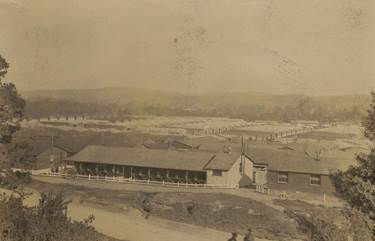
Figure 6. Witley Military Camp, circa 1918.
(Image courtesy of Wikipedia)
5. DISCHARGE
Smith arrived at Halifax on 17 August 1919 where he began his processing for discharge from the Army. His Proceedings on Discharge sheet shows him as 928622 Sapper, 1st Canadian Engineers Reinforcement Battalion. He was given a medical examination at Halifax which listed much the same information as his Description on Enlistment. He had gained 2 inches in height and 15 pounds. His pulse was regular at 72 beats per minute, his nutrition, general health and physical condition were all noted as “Good.” There is one notation of interest regarding his physical condition and that was “Condition of arteries: Soft.”[12]
Smith did not claim any service-related disability and was discharged at Dispersal Station “B” in Military District No. 6 (New Brunswick, Nova Scotia, and Prince Edward Island). He indicated that his proposed residence would be 326 Purewell Street[13] in London, Ontario, although his wife was residing at 215 Adelaide Street[14] in London, Ontario at the time. Presumably Smith was provided with transportation at government expense from Halifax to London. This may have involved travel by ship to Montreal and then by train to London.
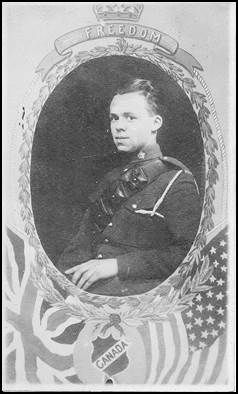
Figure 7. Patriotic Postcard with Photograph of a Very Young
Willliam Albert Smith.
(Image from a family tree on Ancestry.com)
Marriage[15]
Figure 8. All Saints Anglican Church in London, Ontario.
|
William Albert Smith married Sylvia Emma Therza Nye (1901-1982) at All Saints Anglican Church at 249 Hamilton Road in London, Ontario on 1 January 1918 while he was serving as a Corporal in the Garrison Military Police of the Western Ontario Regiment.[16] Both William and Sylvia were 18 years old when they married. |
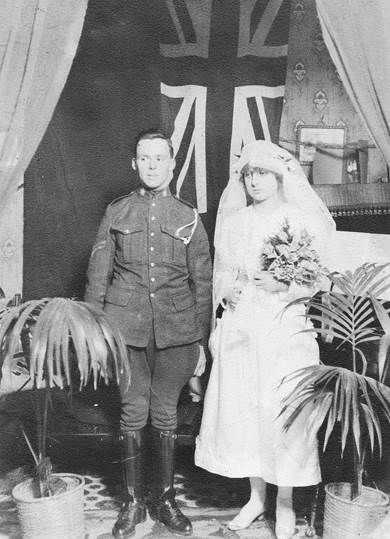
Figure 9. Wedding Photograph of Corporal Smith and Sylvia
Nye.
(Image from a Smith family tree on Ancestry.com)
Children[17]
Sylvia Emma Patricia Smith
William and Sylvia’s first child was a daughter, Sylvia Emma Patricia Smith (1920-2009), born in London, Ontario on 17 May 1920. Sylvia married Melvin W. Cumberland (1917-2006) on 29 June 1940. They had three children. Melvin Cumberland died in Palmerston, Ontario on 18 October 2006. Sylvia died in Palmerston on 22 May 2009 and was buried in the Lake of the Woods Cemetery in Kenora, Ontario.
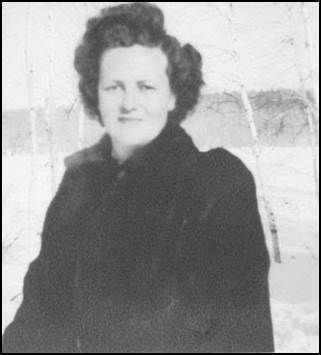
Figure 10. Sylvia Emma Patricia
Smith.
(Image courtesy of Mary Wilson)
William Albert Smith
The Smith’s second child, William Albert Smith (1921-2010), was also born in London on 10 July 1921. In 1938 when he was 17 years old, William was living in Columbus, Ohio. He married Ruth Elizabeth Petrie in London, Ontario on 19 February 1944. In 1945 William and Ruth were living in Sainte Anne, Quebec. From Figure 11 below it appears that William may have served in the forces during the Second World War. He married Ruth near the end of the war. The regiment or corps in which he served could not be determined by the insignia on his cap. It could possibly be the Royal Canadian Air Force.
From their family tree it appears that William and Ruth did not have any children. William Albert Smith died in London, Ontario on 7 December 2010 at the age of 89.
|
|
Barry Osborne Smith
The third child of William Albert Smith and Sylvia Emma Therza Smith was Barry Osborne Smith (1924-2004). Barry was born on 4 April 1924 in London, Ontario. Barry married Margaret Ellen Petrie (1921-1960) and they had four children. After Margaret’s death in 1960 Barry married again. His second spouse was Elizabeth Teresa Harding (1927-2009). They had one son. Barry died in London, Ontario of 3 November 2004.
|
|
Figure 13. Barry as a Young Man.(Image courtesy of G.W. London) |
Figure 14. Margaret Ellen Smith.(Image courtesy of G.W. London) |
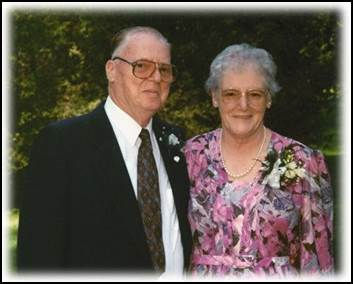
Figure 15. Barry and his Second Wife, Elizabeth
Teresa.
(Image courtesy of G.W. London)
7. POST SERVICE LIFE
William Albert Smith’s family tree by G.W. London indicates that William may have owned and operated W.A. Smith & Sons Body Shop at the corner of Barker and Gammage Streets in London, Ontario. Nothing more is known about his life after leaving the Army in 1919. He died in London, Ontario on 23 September 1982. His wife Sylvia had predeceased him on 7 February 1982.
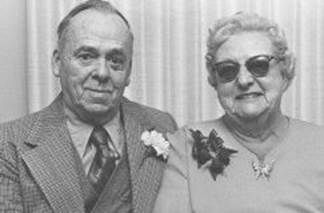
Figure 16. William Albert and Sylvia Emma
Smith.
(Image courtesy of G.W. London)
ANNEX A
Additional Information from the Granddaughter of William Albert Smith
(email from Ellen Carbone, dated 11 August 2023)
NOTE: Some of the information contained in this Annex corrects some erroneous information contained in the narrative.
William Albert Smith was the grandfather of Ellen Carbone. Her father was his second son, Barry Osborne Peter Smith.
William Albert Smith and Sylvia Emma Therza Nye had 5 children, not 3. In 1926 Sheila Smith (Gristey) was born and in 1928 their third and last son Terrance Edwin Smith (known by friends and family as Gus) was born. They are both still alive and live in London and Thorndale, respectively. William Albert Smith did own and operate W.A. Smith and Sons auto body shop at Barker and Gammage in London.
The Smith’s first son, “Bert,” is thought to have lived in Ohio, because at his funeral someone who spoke said he had never been out of Canada.
Both Bert (William Albert, Jr.) and Barry were in the Royal Air Force. Bert was a pilot trainer. He trained at a base out west for part of the war. After the war he worked at his dad's auto body shop and later repaired engines, forklifts and such, and had a shop on Highbury near Trafalgar. He and Ruth had a daughter Cheryl (Sherry) and a son Greg, who passed away in May 2023.
Barry was a wireless mechanic and stationed in Gander, Newfoundland, which was not part of Canada at that time. He was a printing pressman at Selby Youngs and Lawson and Jones (later Lawson Marsden). His second wife Betty died on February 20, 2010 not 2009, as stated in the narrative.
Sheila, the Smith’s second daughter, married Bill Gristey who also did engine repairs as well as driving a dump truck or concrete truck. He worked on the Fanshawe dam when it was being built as it required a continuous pour of concrete during its construction. They had 6 children.
Gus, their third son and fifth child is a farmer. He and his wife Helen (deceased in 1981 or 82) had three children; Terry, Jr. (deceased), Susan and Larry, who is also a farmer.
Ellen had been told that her grandfather, William Albert Smith, Sr. had fought in France in 1917 or 1918 and had a head wound near his eye, but there is no evidence that this had occurred. It is known that he enlisted for the war and shipped out to England but, no evidence has been found to definitely state that he was in France.
REFERENCES:
Civil Documents
1921 Census of Canada.
Baptism Certificate: William Albert Smith.
Marriage Certificate.
Family Trees
William Albert Smith by G.W. London.
Sylvia Emma Patricia Smith by Mary Wilson.
William Albert Smith by Kathy Carrall.
Barry Osborne Smith by G.W. London.
Internet Web Sites
Wikipedia: 153rd (Wellington) Battalion, C.E.F.
https://en.wikipedia.org/wiki/153rd_(Wellington)_Battalion,_CEF
Wikipedia: Witley Camp.
https://en.wikipedia.org/wiki/Witley_Camp
Wikipedia: Kinmel Park Training Area.
https://en.wikipedia.org/wiki/Kinmel_Park_Training_Area
All Saints Church.
https://allsaintslondon.diohuron.org/
Service Papers (National Archives of Canada)
Attestation Paper.
Description on Enlistment.
Data Form (on discharge).
Statement of Service.
Hospital Record.
Casualty Form – Active Service.
Medical Examination Upon Leaving the Service.
Discharge Certificate.
Pay Records.
Proceedings on Discharge.
Medical History Sheet
ENDNOTES
[1] County Cavan is in the province of Ulster and is part of the Border Region. It is named after the town of Cavan and is based on the historic Gaelic territory of East Breffny.
[2] Family tree.
[3] His Attestation Papers indicate that he claimed his religion to be Church of England and not Roman Catholic.
[4] G.W. Long note appended to Smith’s family tree.
[5] Rothsay is located about 100 miles north northwest of Kitchener, Ontario and about 220 miles west of Toronto.
[6] This address no longer exists in Ireland.
[7] After sailing to England in April 1917, the battalion was absorbed into the 4th and 25th Reserve Battalions on May 7, 1917. The 153rd (Wellington) Battalion, CEF had one Officer Commanding: Lieut-Col. R. T. Pritchard. He died near his hometown of Fergus in 1955 and is interred at Belsyde Cemetery.
[8] Rank shown on his marriage certificate dated 1 January 1918.
[9] Probably Acting Corporal.
[10] The author has written Wilson’s story in a separate document.
[11] Rhyl is a seaside town and community in Denbighshire, Wales. The town lies within the historic boundaries of Flintshire, on the north-east coast of Wales at the mouth of the River Clwyd. To the west is Kinmel Bay and Towyn, to the east Prestatyn, and to the southeast Rhuddlan and St Asaph.
[12] How this was determined is unknown. One may assume that the doctor felt the arteries in his neck and other parts of his body to see if any calcification appeared to have occurred.
[13] Purewell Street no longer exists in London, Ontario.
[14] Today (2023) in London, Ontario there is a 215 North Adelaide Street and a 215 South Adelaide Street. 215 South Adelaide Street is a commercial building. 215 North Adelaide Street is a residential property.
[15] Various family trees on Ancestry.com.
[16] His marriage certificate shows his occupation as “Corporal, Garrison Military Police.”
[17] Various family trees on Ancestry.com.